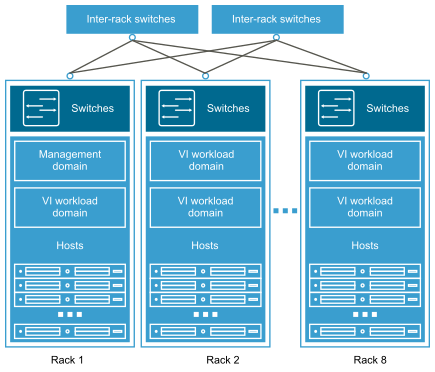VMware Cloud Foundation supports two architecture models - standard and consolidated, according to the requirements of your organization and the resource capabilities of your environment. Implement a standard architecture for workload provisioning and mobility across VMware Cloud Foundation instances according to production best practices. If you plan to deploy a small-scale environment and extend it according to customer adoption, or if you are working on an SDDC proof-of-concept, implement a consolidated architecture.
Standard Architecture Model
With the standard architecture model, management workloads run on a dedicated management domain and customer workloads are deployed in separate virtual infrastructure (VI) workload domains. Each workload domain is managed by a separate vCenter Server instance which provides for scalability and allows for autonomous licensing and life cycle management.

Standard architecture is the recommended model because it aligns with the VMware best practice of separating management workloads from customer workloads. It provides better long term flexibility and expansion options. This architecture model supports multipleVMware Cloud Foundation instances, each instance running at least two workload domains - management and virtual infrastructure.
Consolidated Architecture Model
In this model, the management and customer workloads run together on a shared management domain. The environment is managed from a single vCenter Server and vSphere resource pools provide isolation between management and customer workloads. Resource pools must be properly configured as the domain is shared by the management and compute workloads.

As you add additional hosts to a VMware Cloud Foundation system deployed on a consolidated architecture, you can migrate to the standard architecture by creating a VI workload domain and moving the customer workload VMs from the compute resource pool to the newly-created VI workload domain. After moving these VMs, you might need to update shares and reservations on the compute resource pool in the management domain.